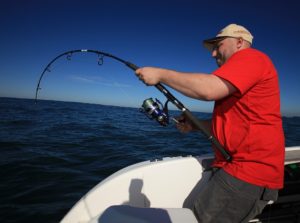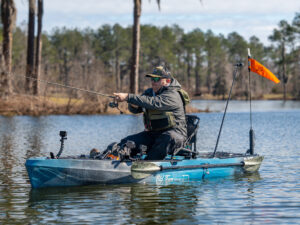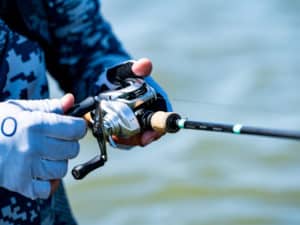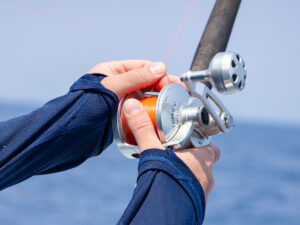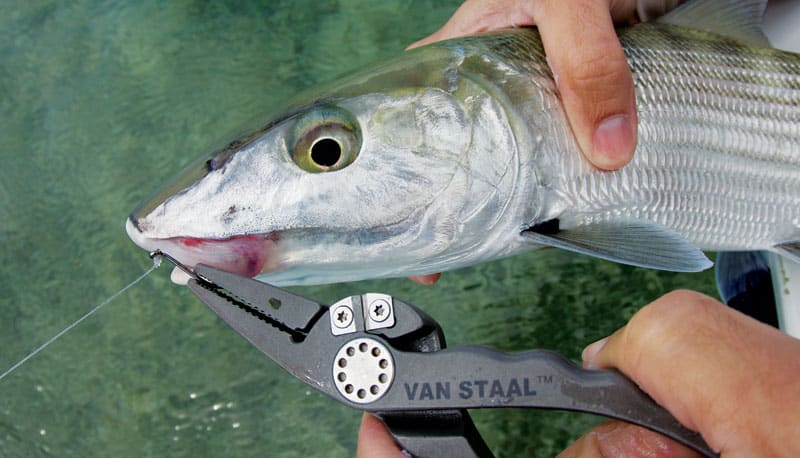
While learning the ABCs of fishing as a boy in the back fingers of Florida’s Loxahatchee River, I once “borrowed” a pair of needle-nose pliers from my father’s toolbox. No biggie, I figured — I’d simply return them when I was done. Dad would never know.
Uh-huh.
A few weeks later, Dad and I had a little talk after he found his favorite carbon-steel pliers permanently sealed shut with corrosion. Lessons learned: Don’t borrow without asking; and don’t venture into a saltwater environment without a marinized pair of dikes.
Structural Integrity in Saltwater
It probably would’ve helped my cause back then had I thoroughly cleaned those old pliers after using them. But the truth is that not all pliers are created equal; some are better than others when it comes to handling the rigors of saltwater fishing.
Several metals — including aluminum, stainless steel and titanium — provide both strength and corrosion resistance in a pliers’ body. For decades, stainless-steel pliers, such as those made by the Boone Bait Co. and Manley Industries, were the rule in the world of saltwater fishing. But in the past decade, the category has expanded, as a number of reel manufacturers spun off side businesses, building fishing pliers with the same raw materials utilized in their reel construction.
“I remember the day Steve Abel took us out and told us we were going to start making pliers,” recalls Jeff Patterson, sales director at Abel Automatics Inc.. “We were like, ‘What do you mean?'”
But Abel’s idea back in 1995 was simple — use the same billets of high-grade aluminum used to make the company’s excellent saltwater fly reels — and craft pliers instead.
“We use a 6061 T-6 aluminum, mostly because of its corrosion resistance and our ability to machine it,” says Patterson. “We also like this material because of our familiarity with properties for anodizing it.”
No doubt, a 6000-series aluminum — an easily machined alloy that includes magnesium and silicon — ranks as a popular building material for pliers designed for the salt. And not only fly-reel companies like Abel have entered this realm.
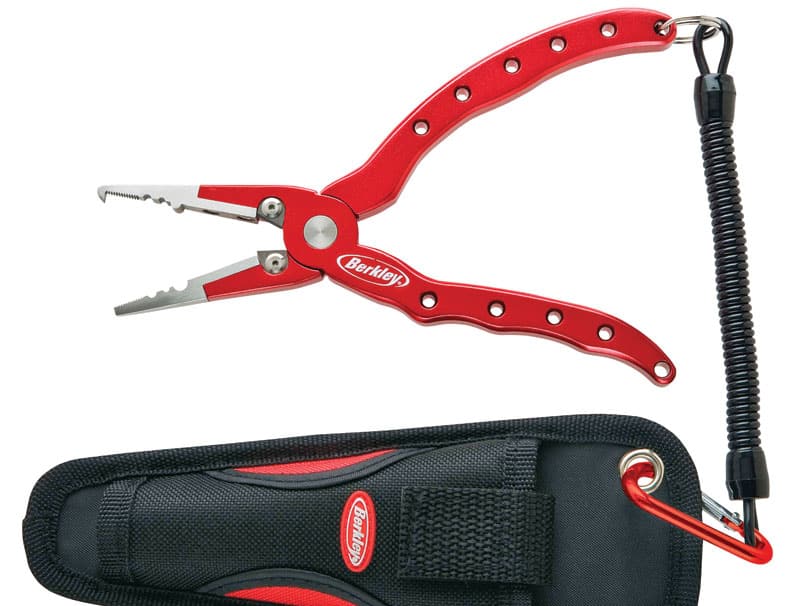
Alutecnos, the Italian manufacturer renowned for its big-game reels, also uses anodized aluminum in its Mako pliers. The 6082 aluminum is the same material used in the company’s tuna and marlin reels, and the plier’s handles are crafted with through-holes that further lighten the weight without compromising strength. The handles also feature built-in ergonomic grips.
“If the handles are flat, they sometimes slide in your hands,” says Eros Cattaneo, chief executive of Alutecnos USA. “Our design ensures a solid grip.”
And that’s important when wrangling with a big fish boat-side, trying to remove a stubborn hook. A sound grip also provides comfort when rigging lures, leaders and baits — all important duties for a pair of saltwater pliers.
But pliers aren’t designed solely for function over form these days. While Abel’s No. 4 pliers have a convenient bottle opener built into the handle, the company also offers literally dozens of other aesthetic options, such as custom, hand-painted colors and fish graphics designed by marine artists like Tim Borski and Derek DeYoung.
Is the artistic coloring necessary? No. But it has proved to be popular with anglers.
“People like the idea that they’re hand-painted,” says Patterson. “One tarpon finish is going to look different than the next tarpon finish. We anodize them first. Then we use a paint that seeps into the anodized pores of the aluminum. It’s a two- to three-hour process, and it’s all done by hand.”
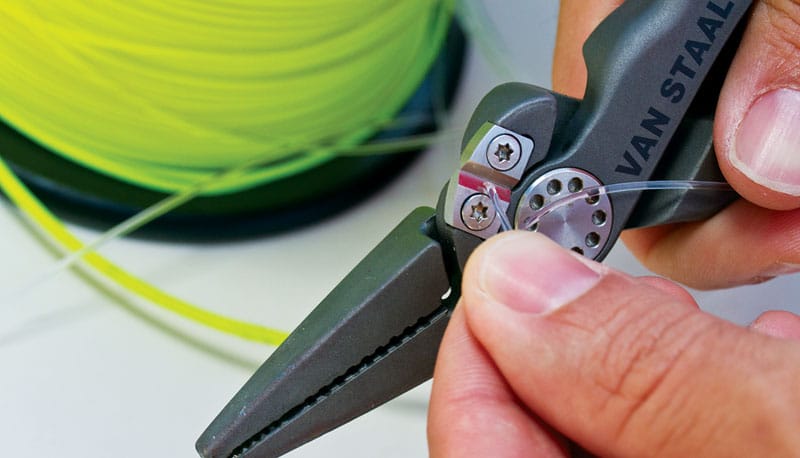
Selecting High-Quality Fishing Pliers: Cutters and Jaws
While aluminum is an incredibly rigid and lightweight material (not to mention a good canvas for a custom paint job), it’s also very soft in composition. Consequently, it would never hold up as an effective material for a pliers’ line cutters or jaws. So manufacturers of aluminum-based pliers turn to different metals in these important areas.
“Our cutters and jaws are both made from stainless steel in a 440C grade,” says David Nilsen, co-owner of Accurate Fishing Products, which makes three models of Piranha pliers. “The cutters are heat-treated very hard to 60R (a Rockwell scale measurement that determines hardness). They’re like a knife blade. Then we coat the cutters and jaws with a Teflon impregnation, because stainless steel of that caliber is susceptible to minor surface corrosion.”
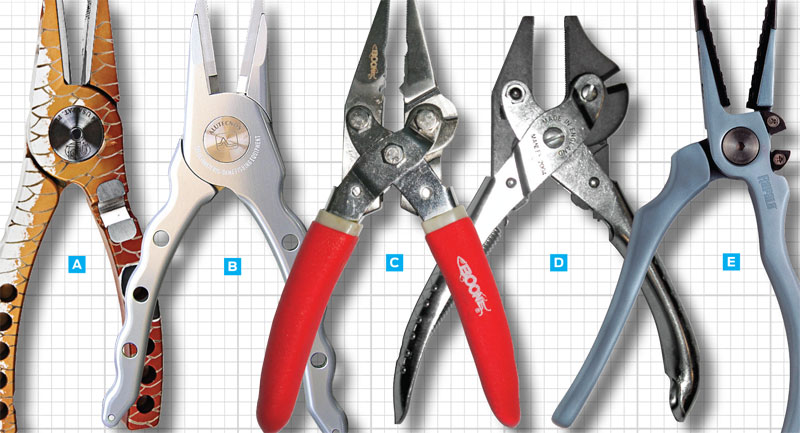
Nilsen stresses, however, that line cutters on most premium saltwater pliers are designed primarily for mono and braid. “If you plan to cut wire, get wire cutters,” he says. “Otherwise, you’ll blunt the cutting edge, and they won’t cut braid very well after a certain amount of time.”
And here’s another point: Even if you’re keeping your pliers clean and not abusing them by cutting wire and the like, a pliers’ jaws and cutters will eventually wear from use.
Not to worry — these tempered, coated stainless-steel parts are actually “inserts” these days on most high-end plier models. Anglers can easily replace jaws and cutters by simply unscrewing the old parts and screwing in new inserts from the manufacturer.
“This is nice,” says Cattaneo, “because you don’t have to replace the pliers altogether when these parts wear — just get the replacements and they’re good as new.”
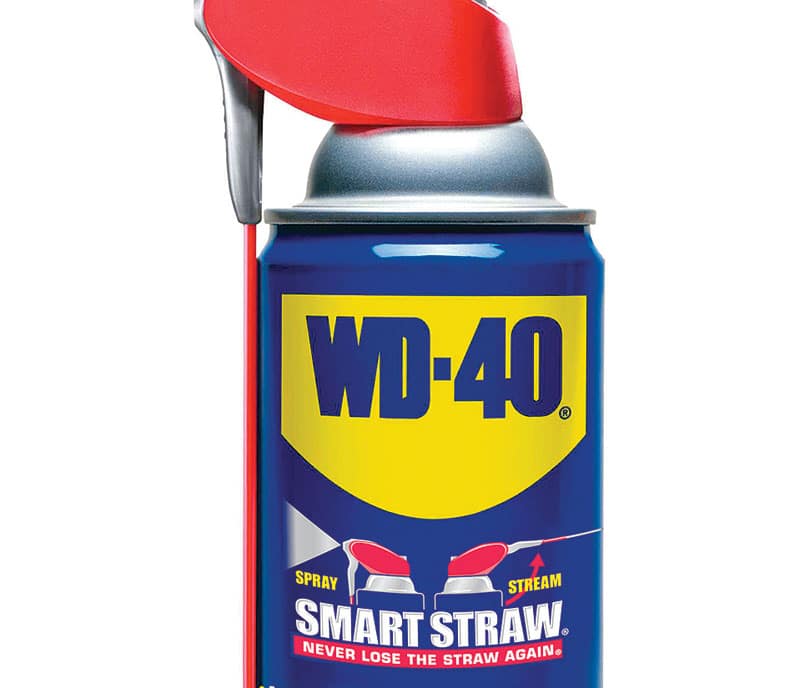
But Craig Cantelmo, sales director at Van Staal, says there’s some risk in using pliers that have different metals within the jaws and cutters. Van Staal was among the earliest companies in the mid-1990s to develop anodized-aluminum pliers with stainless-steel line cutters and jaws. But in 1998, the company scrapped the idea and went in a different direction.
“There’s a little thing called electrolysis that occurs when you put two dissimilar metals together in the presence of water,” says Cantelmo. “It’s a chemical reaction that slowly breaks down the metals and forms a residual white powder.”
Van Staal instead built what has generally become known as the ultimate saltwater pliers. The three models are made from solid titanium — the handles and entire jaw structure is built in a one‑piece titanium mold.
“It better fit our brand identity of ‘buy once, last forever,’” says Cantelmo. “Working with titanium is extremely costly, so it’s really been a labor of love for us. But they’re bulletproof, and you’ll never need another pair of pliers.”
You’ll pay a premium for these pliers, but they’ll likely last a lifetime.
Even if they’re “borrowed” by a sneaky youngster.

